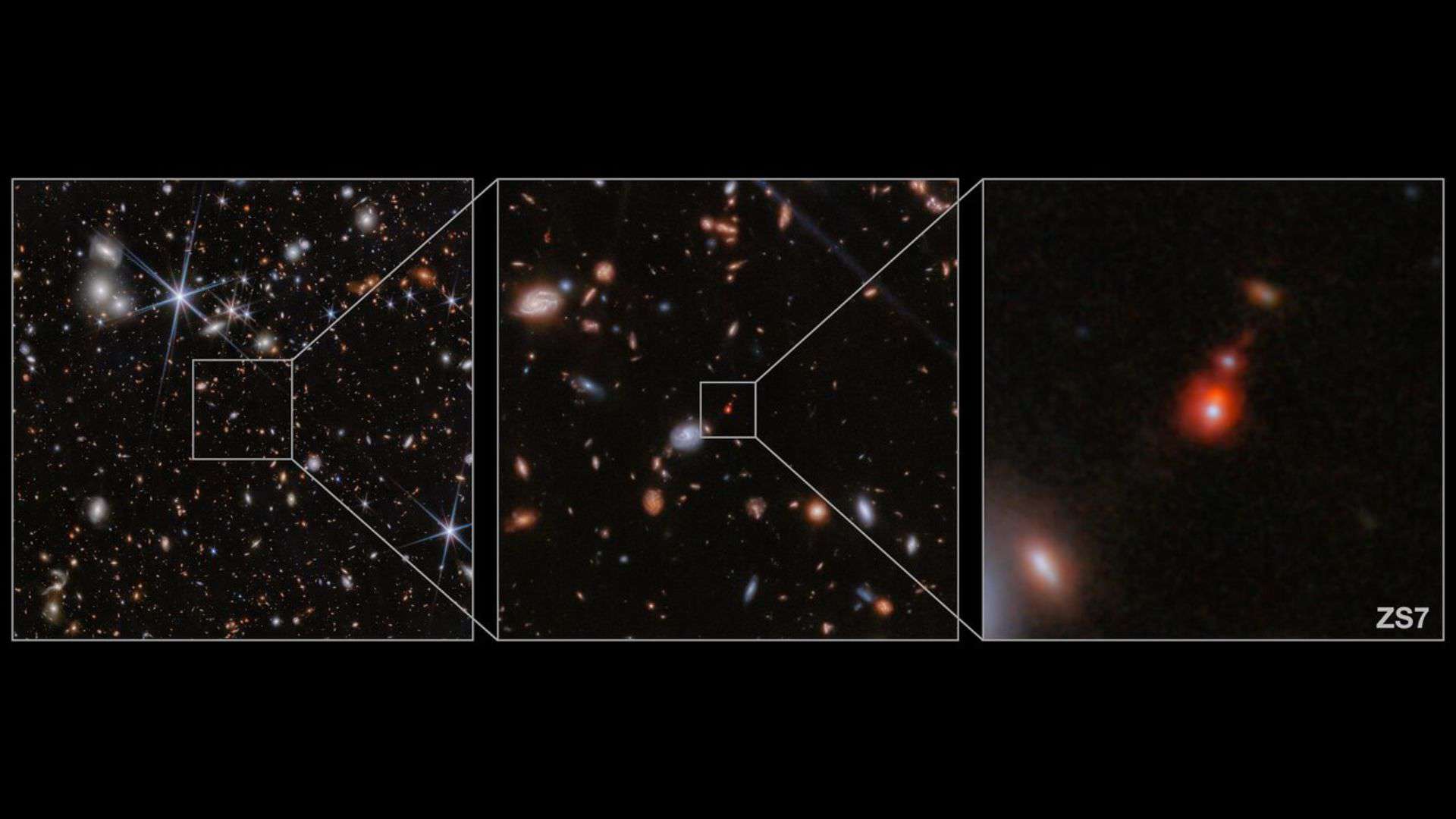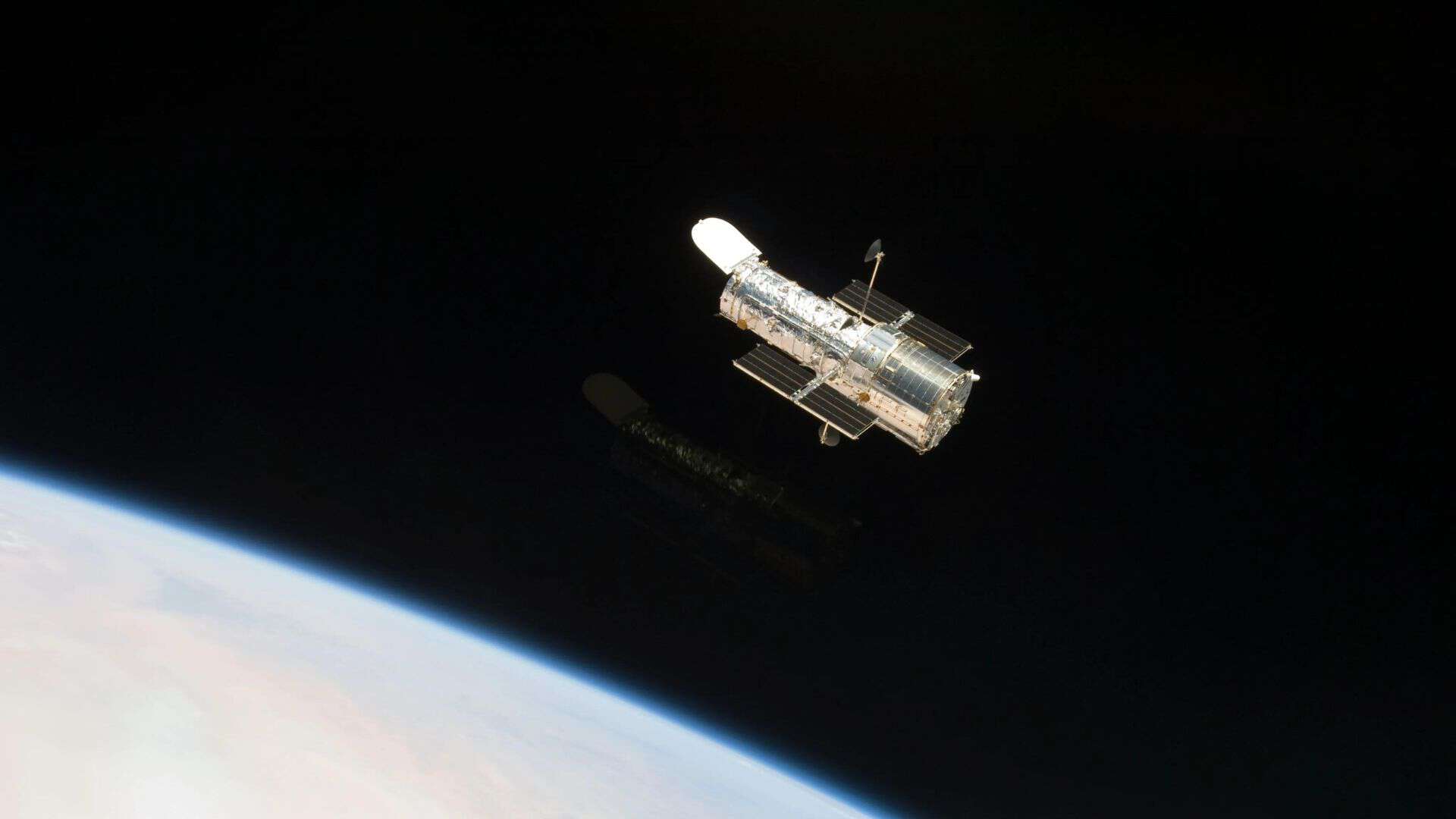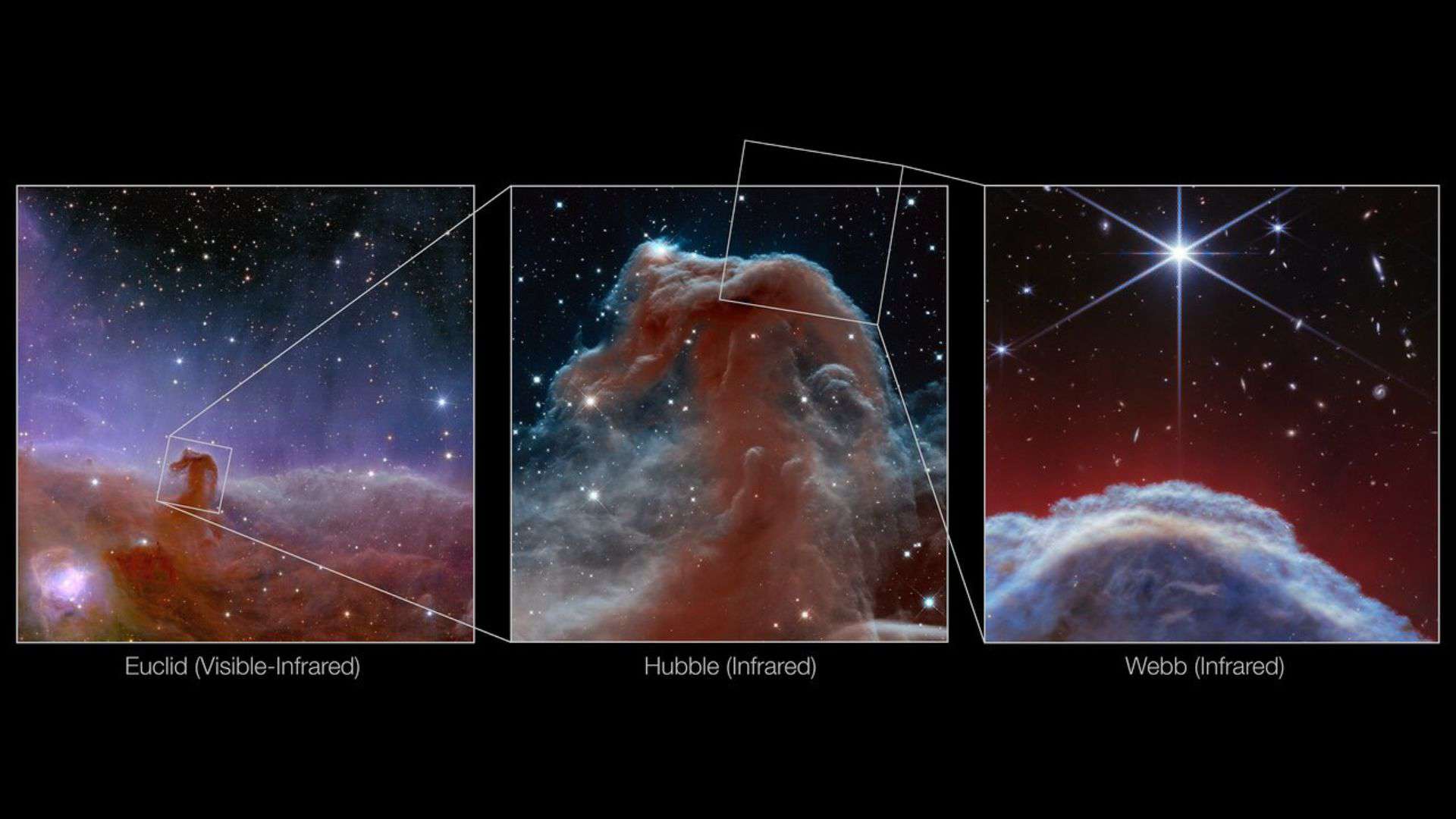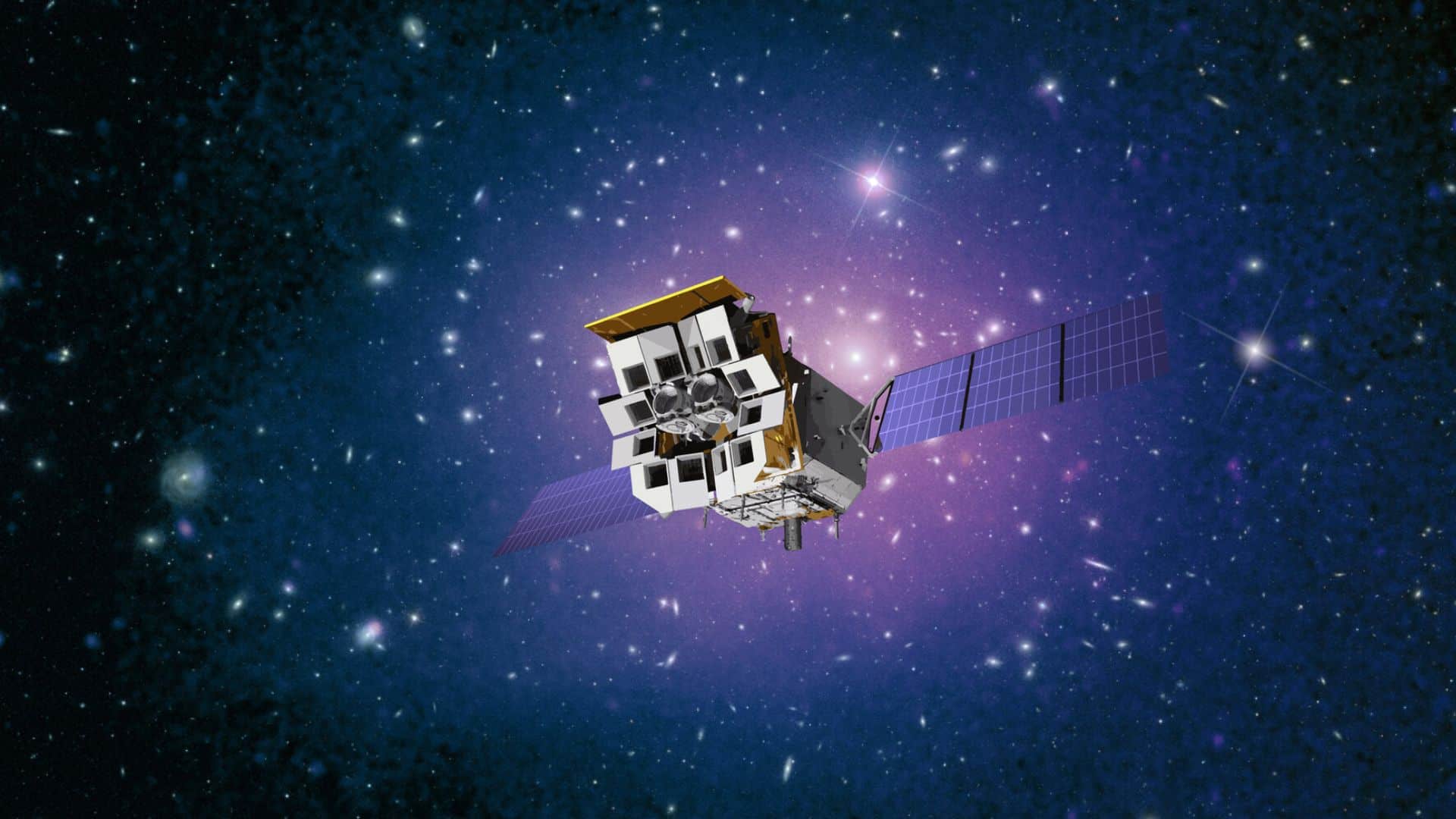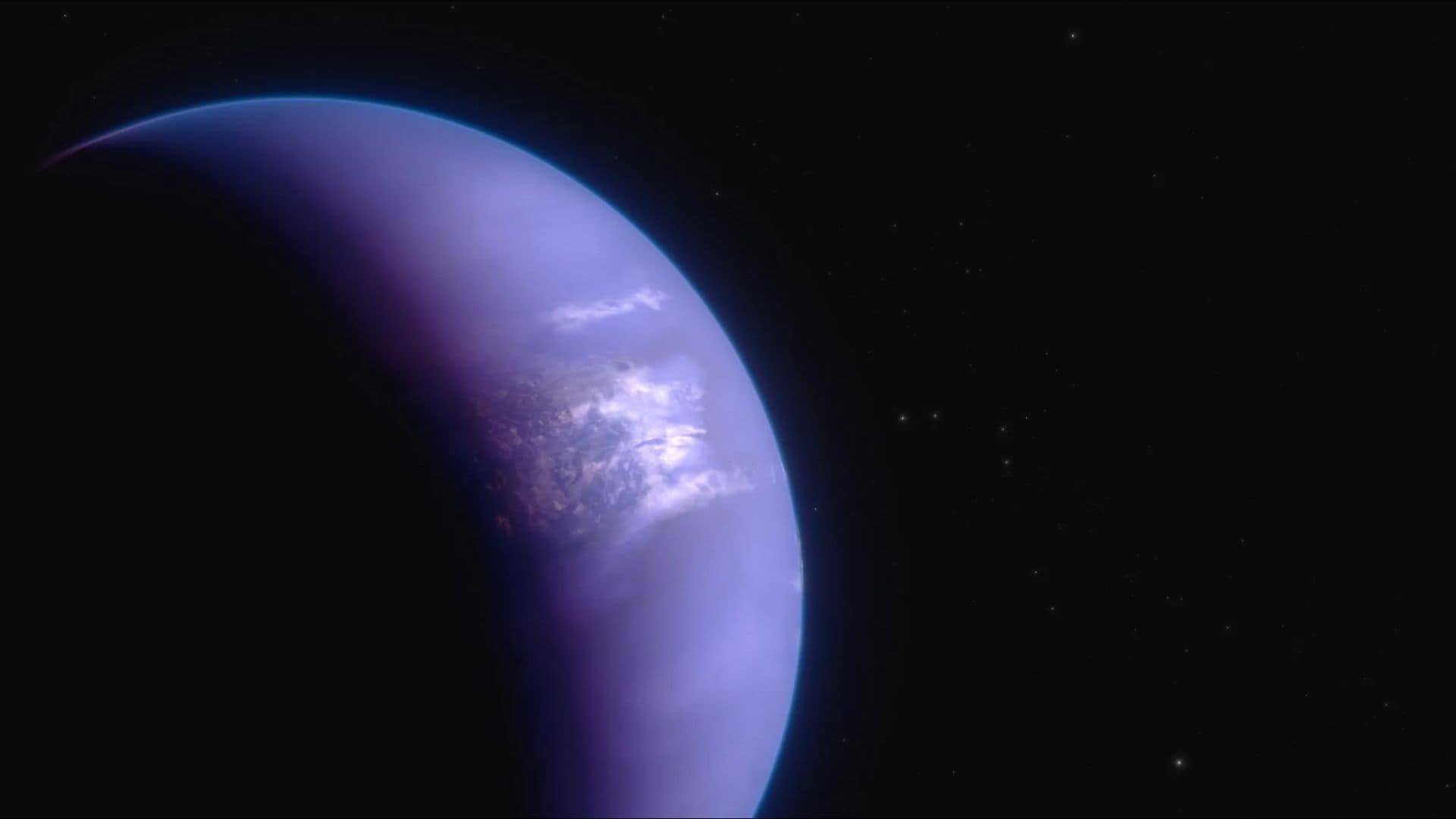
The James Webb Space Telescope has revealed temperature maps on the hot gas-giant exoplanet WASP-43 b, located roughly 280 light-years away in the constellation Sextans.
An exoplanet is a planet that orbits stars outside our solar system. Like our Earth orbits the sun, planet WASP-43 b orbits the star WASP-43. Planet WASP-43 b was discovered in 2011.
WASP-43 b is a “hot Jupiter” type exoplanet, meaning the size of this exoplanet is roughly the same as that of Jupiter, but its temperature is much higher than that of Jupiter.
The exoplanet WASP-43 b orbits its host star (WASP-43) at a distance of just 1.3 million miles — less than 1/25th the distance between Mercury and the Sun and takes only 19.5 hours to complete its one orbit (orbital period).
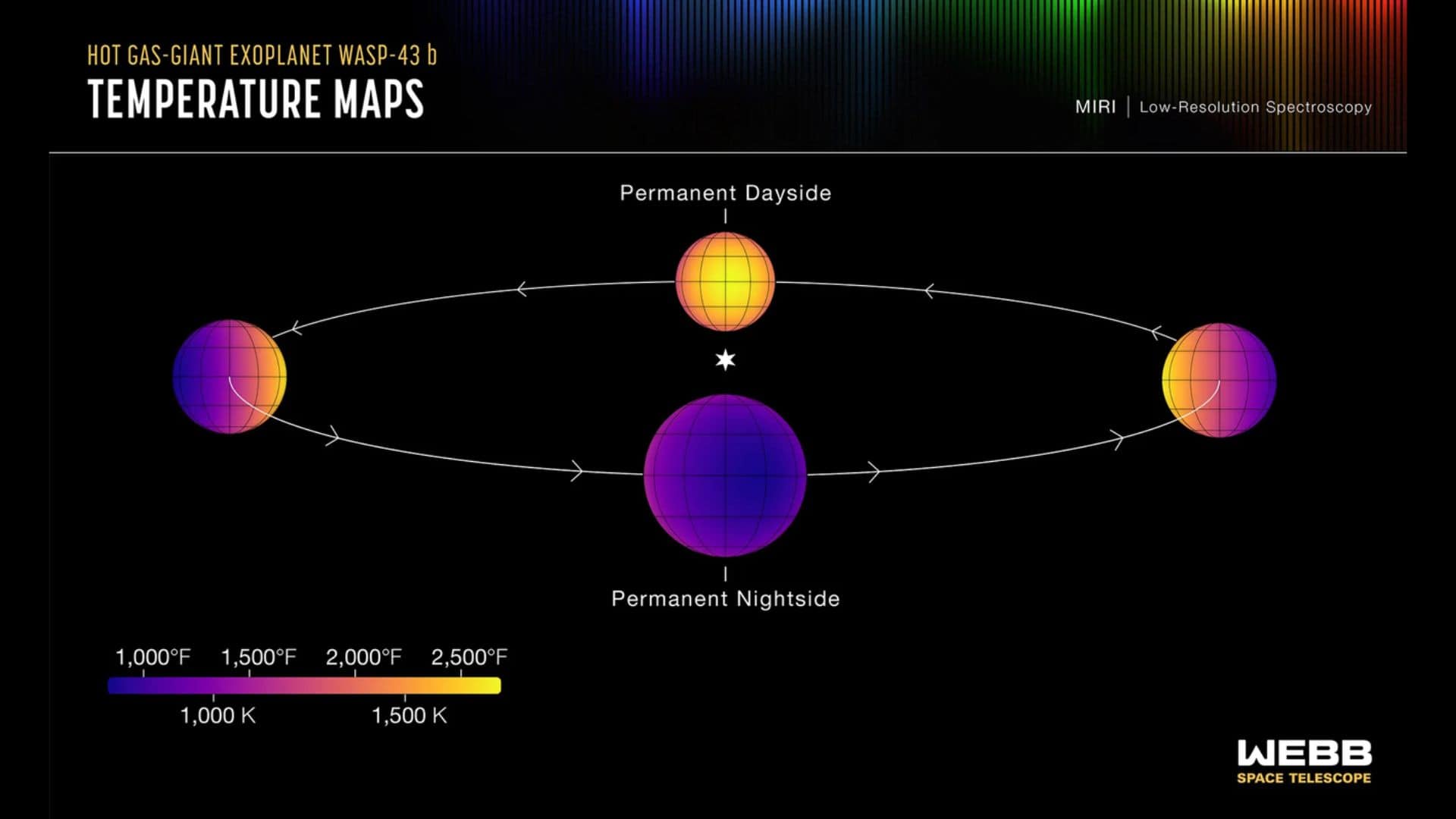
Due to its proximity to the host star, the exoplanet WASP-43 b is tidally locked, meaning its orbital period around the host star is the same as its rotational period around its own axis.
So the host star always illuminates one side (one hemisphere) of the planet, called the dayside, and its other side (the other hemisphere) is in complete darkness, called the nightside. It is very similar to our moon, which is tidally locked to our earth.
Astronomers have used the Mid-Infrared Instrument (MIRI) of the James Webb Space Telescope to measure light from the WASP-43 system every 10 seconds for more than 24 hours to plot the light curve.
As this light curve is taken over an entire orbit or all phases of the planet that’s why it’s called the phase curve. Here, the orbital period of the exoplanet WASP-43 b is 19.5 hours, and light has been taken for more than 24 hours (for 1.25 orbits).
Taylor Bell, a researcher from the Bay Area Environmental Research Institute and lead author of the findings, said in a statement:
“By observing over an entire orbit, we were able to calculate the temperature of different sides of the planet as they rotate into view. From that, we could construct a rough map of temperature across the planet.”
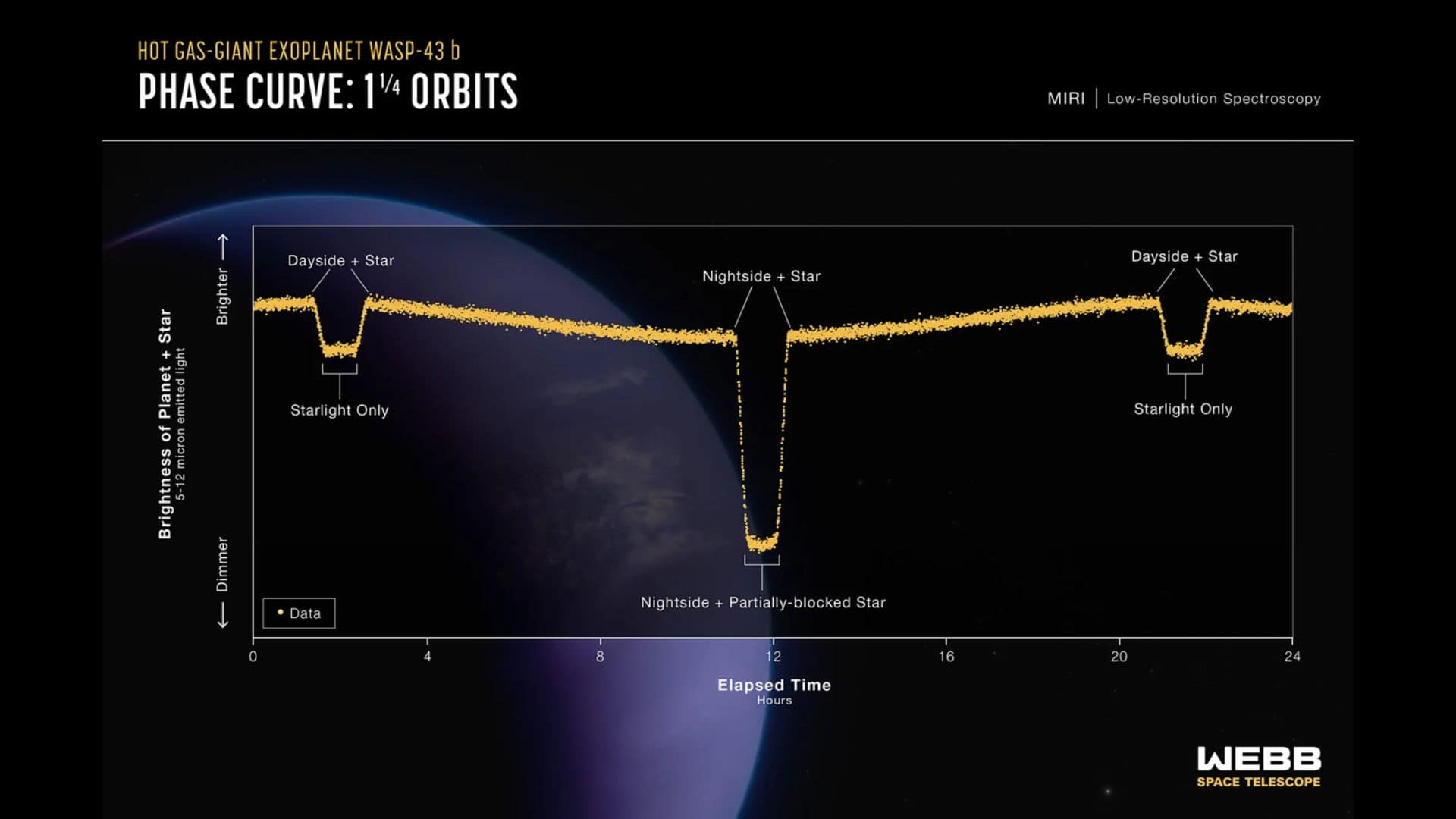
The WASP-43 system (star + planet) appears brightest when dayside of WASP-43 b is facing the telescope, just before and after the secondary eclipse when the planet passes behind the star.
After that, the system gets dimmer as the planet continues its orbits and its nightside comes into view.
The system appears dimmest when nightside of WASP-43 b is facing the telescope, just before and after the primary eclipse when the planet passes in front of the star and blocks some of the starlight.
The James Webb Space Telescope is so sensitive that it can detect a change in brightness as small as 0.004% (40 parts per million).
Based on the MIRI observations, astronomers have found that WASP-43 b has an average temperature of about 2,280°F (1,250°C) on the dayside and 1,115°F (600°C) on the nightside.
A scientific paper has been published on the above findings in Nature Astronomy on April 30, 2024.
The James Webb Space Telescope (JWST) is an international collaboration between NASA, ESA, and the Canadian Space Agency (CSA).
Please bookmark Spaceandtelescope.com or follow us on Facebook and Twitter to get latest space news, upcoming skywatching events and astronomy-related content.
